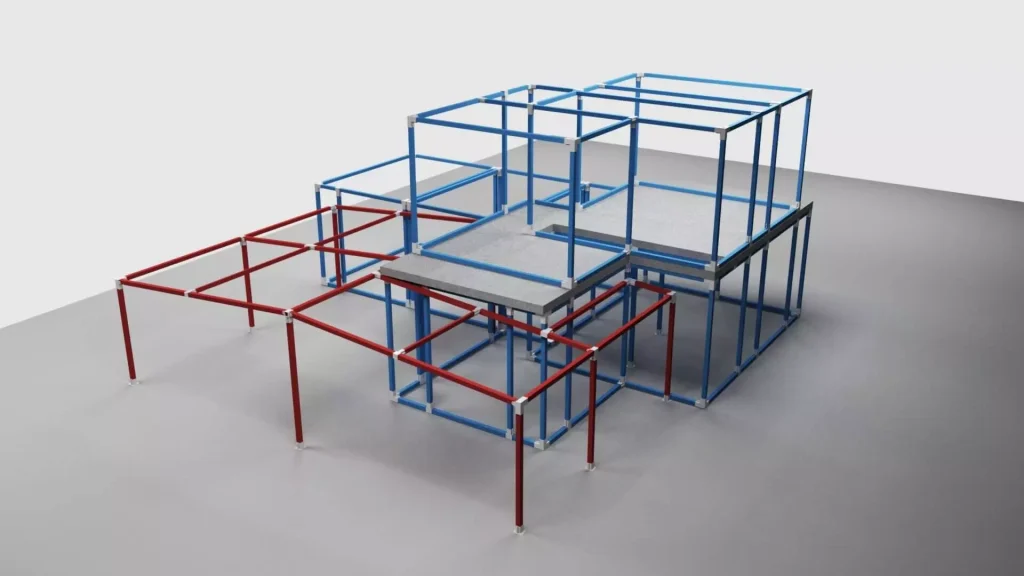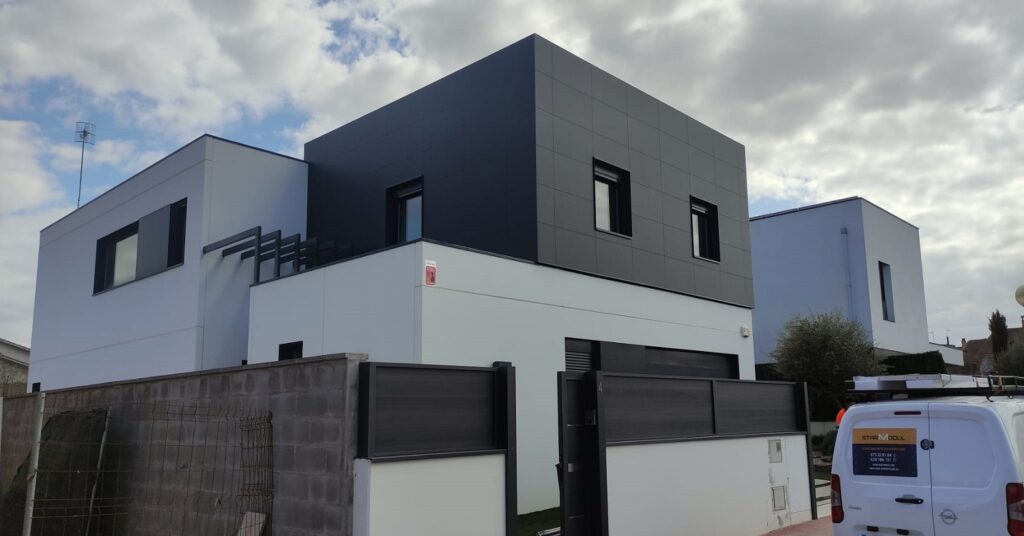What is an industrialized house?
Industrialized housing is a prefabricated construction method that can be quickly assembled on site. Using modern technology and machinery, these homes are built from standardized components that fit together seamlessly. As a result, the construction process is accelerated, allowing the house to be ready in a few weeks.
Cost-effectiveness is a major advantage of industrialized housing. Standardized components are much cheaper than custom-made parts, which significantly reduces construction costs. The faster procedure also reduces labor costs, making it an economical choice for those seeking a quality home.
In addition to the economic advantages, industrialized houses are also environmentally friendly. The components used are designed to be energy efficient and environmentally sustainable, resulting in a much smaller carbon footprint than a traditional residence. The construction process itself is also more efficient, produces less waste and requires fewer resources. This makes industrialized housing an ideal choice for those looking for an affordable and environmentally friendly home.
Industrialized houses and construction standards
Industrialized houses have become increasingly popular in recent years due to their many advantages, such as cost-effectiveness, energy efficiency and speed of construction. However, building regulations play a crucial role in ensuring the safety and quality of these houses. In this article, we will delve into the topic of industrialized homes and building regulations, exploring what they are, their benefits, the materials used in their construction and, finally, the costs associated with them. So join us as we delve deeper into this fascinating topic and discover the world of industrialized homes and building standards.

Advantages of an Industrialized House
Fire resistance / Incombustibility
Steel is the only non-combustible material, i.e. in case of fire it does not feed the flames, does not produce smoke or toxic gases and does not collapse in a few seconds, leaving the certainty of an escape route even in relatively long times. As is known, their mechanical characteristics progressively decrease with increasing temperature during a fire and, in order to slow down this process, steel structural elements can be coated with plates, paints or varnishes that slow down the increase in temperature. The combination of these characteristics, combined in a single material, makes steel the best choice for buildings in seismic zones.
100% Recyclable
Steel is one of the most recycled materials in the world and, once dismantled and recycled, does not lose its properties. Each of the components can be easily transported to the collection centers to be re-melted in the electric furnaces and converted into new steel that does not lose its initial properties. The steel structure, if properly designed, may prove to be reusable in other locations and for other purposes of use.
Architectural flexibility
Steel can be used in various forms, finishes, assembly and assembly methods, making it extremely flexible and usable in various types of interventions. For very wide openings and large spaces, the structures become an architectural element that characterizes the building while defining its design. This exceptional flexibility makes it possible to cope with any type of intervention, even thanks to the extreme mechanical precision of steel constructions. The freedom of expression and the possibility of installing it with the most varied cladding materials, allows the designer to freely express all his creativity in the architectural project.
Lightness and anti-seismic properties
The high strength/weight ratio of steel makes it possible to obtain very small profiles with high strength; this leads to a significant reduction in the weight of the structure with consequent benefits for the entire building, starting from the realization of the foundations. A lower weight means reducing the inertia forces generated by the earthquake on the structure. Ductility is another key characteristic, so steel, unlike other building materials, can undergo large deformations before reaching the breaking point; it is a fundamental characteristic that can be counted on to realize truly earthquake-resistant structures. These characteristics, combined in a single material, make steel the best choice for buildings in seismic zones.
Durability
One of the main advantages, including economic advantages, of steel constructions is the low or almost zero need for maintenance. The passage of time in general creates problems for many building materials, as these are often related to the deterioration of the material itself. Steel retains its technical and structural characteristics throughout its service life; for particular uses, steel structural components can be galvanized, painted or subjected to other special treatments to make them more durable, even in the event of particularly aggressive agents throughout the building’s service life. This characteristic makes it a particularly preferred material for project applications with elements that are left exposed to the elements and exposed to atmospheric agents. In addition, thanks to its physical characteristics, microorganisms such as mold, fungi and bacteria that deteriorate the material do not attack steel. In addition, steel structures are immune to the capillary appearance of moisture, unlike most traditional and wooden constructions.
Tailor-made design
Steel can be used in various forms, finishes, assembly and assembly methods, making it extremely flexible and usable in various types of interventions. For very wide openings and large spaces, the structures become an architectural element that characterizes the building while defining its design. This exceptional flexibility makes it possible to cope with any type of intervention, even thanks to the extreme mechanical precision of steel constructions. The freedom of expression and the possibility of installing it with the most varied cladding materials, allows the designer to freely express all his creativity in the architectural project.

Materials used in industrialized houses
When it comes to building a house, the materials used play a crucial role in its durability, sustainability and overall quality. In the case of industrialized houses, the materials used are carefully selected to ensure that they meet the required standards of efficiency and cost-effectiveness. These homes are built in factories and assembled on site, making them a popular choice for those who want a fast and efficient construction process. In this article, we will take a closer look at the materials used in industrialized homes and how they contribute to the overall quality of these homes.
Costs of an industrialized house
Cost is one of the main considerations when analyzing an industrialized house. Prices vary greatly depending on the dimensions, materials used and location. Generally, these homes have an economic advantage over traditional residences, as the construction process is faster and more efficient, which translates into lower labor costs. In addition, many industrialized homes are built with standardized designs and components, which helps reduce costs.
In addition to the initial cost of the house, other expenses may arise. Depending on your location, permit fees, utility connections and other bills may be incurred. In addition, some industrialized houses may require maintenance or repairs, especially if they are built with materials susceptible to wear and tear.
Despite these potential additional costs, many people still consider an industrialized home to be a more reasonable option than a traditional home. This is especially true for people on a restricted budget, looking to build a new home. By choosing an industrialized house, they can acquire a superior quality house at a reasonable price.
Consequently, it is essential to research prices and compare offers before making a decision. Different manufacturers offer different prices and features, so it is vital to browse around and select the best option for your needs and spending plan. This way, you can be sure to get the most value for your money and appreciate all the advantages that an industrialized home has to offer.



